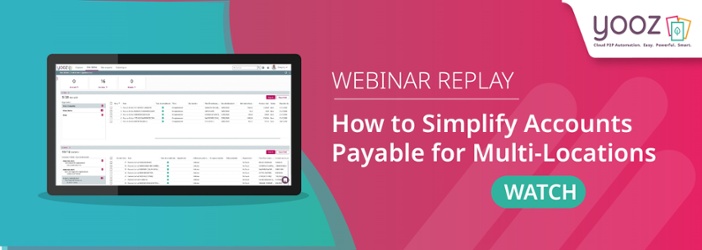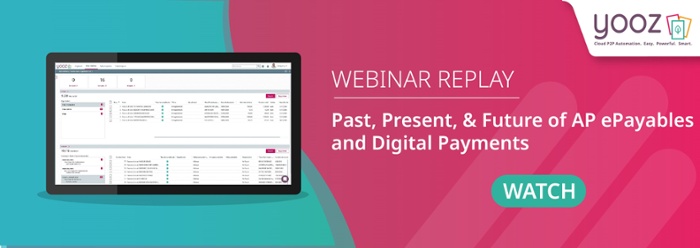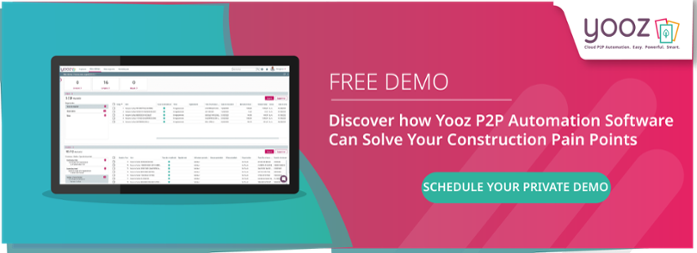In today’s interconnected business landscape, international trade is becoming more crucial than ever before across all sectors. In fact, Juniper Research estimates that cross-border B2B payments will surpass $40 trillion globally by 2024, up from $37 trillion in 2002.
But how efficient are most cross border payment practices?
The answer is traditionally not very. Historically such cross-border transactions fall prey to the same challenges as domestic transactions: slow, costly, and difficult to track. Add on to these concerns the increasing number of government regulations pertaining to such transactions and electronic data in general.
However, with the right payment management strategies, businesses can avoid these challenges and instead benefit from reduced costs, streamlined processes, and accelerated growth.
In this article we’ll look into the area of cross-border payments, their role in internal trade, and how harnessing automated financial systems are helping to revolutionize the efficiency and effectiveness of these transactions.
What are Cross Border Payments
Cross border payments involve the transfer of fund between individuals, businesses, or institutions located in different countries. These financial transactions occur whether the participants are linked by a shared border or separated by oceans.
The implications are vast. For businesses involved in international trade, these payments are key, boosting global commerce by enabling the procurement and sale of goods and services regardless of location.
Regardless of whether these transactions are initiated by corporations or individuals, they are required to comply with varying electronic data regulations and often require currency conversions.
Exploring the Main Types of B2B Cross Border Payments
In our interconnected world, cross border payments have become an essential part of international business and personal transactions. These transactions, involving parties located in different countries, can be done using a range of payment methods. Let's look into the main types of B2B payments:

Cash |
Cash is one of the oldest forms of payment as well as one of the most common and easiest to keep expenses and fees to a minimum. There are no annual fees or interest, but it is easy to lose track and can be dangerous to transport.
|
Paper Checks |
Although use of paper checks has steadily declined, they still exist in B2B payments. They are always traceable and safer than cash. However, they require manual processing and have a high risk of delays, being lost in transit, or even storage.
|
Credit/Debit Card Transactions |
Credit cards are one of the most convenient and widely used methods of cross border payments. They offer users the ability to make purchases in foreign currencies while the card issuer handles the currency conversion.
It's important to note that credit card transactions are susceptible to fraud and can incur foreign transaction fees or unfavorable exchange rates.
|
International Money Orders |
International money orders are a more traditional (paper-based) and secure method of sending money across borders. A sender purchases an international money order and sends it to the recipient, who then can cash or deposit it into their bank accounts.
While reliable this is a slower method with potentially higher fees compared to modern digital payment methods.
|

Wire Transfers |
Wire transfers are a means of electronic funds transfer, meaning that they electronically move money from one back account to another. They are fast and secure but also come with higher fees including currency conversions and transfer fees.
Wire transfers are a good way to send mass payments quickly but may have a daily cut-off time and require a number of steps to be executed before the actual transaction can occur.
|
Digital Payment Platforms |
Digital payment platforms like PayPal, Venmo, Google Pay, and Skrill have gained popularity for cross border payments thanks to their quick setup, user-friendly structure, and competitive exchange rates.
These platforms allow users to link their bank accounts or credit cards to easily send and receive funds from anywhere at any time. Even better, many of them are able to keep balances in multiple currencies. However, they have higher security concerns than other forms and may have more frequent technical problems.
|
Electronic payments |
Electronic payments, also known as Electric Funds Transfer or EFT, is any type of payment processed electronically. These include the commonly known Automated Clearing House (ACH) payments which involve the transfer of funds from one bank account to another.
ACH payments are good for reoccurring payments and can be integrated into an existing financial platform (such as an existing ERP system).
|
In Summation
There are various methods of cross border payments to cater to different needs and preferences. Credit card transactions are convenient while international money orders and wire transfers are historically reliable. Digital payment platforms, bring modern ease and integration with other business financial systems.
As technology continues to advance, there is sure to be an even wider range of options to choose from for each unique situation.
Key Benefits and Challenges of Cross Border Payment
While cross border payments can create significant opportunities for business to expand in terms of both market and revenue, this growth comes with both benefits and challenges that must be carefully managed.
Here are 5 of the main advantages and disadvantages to consider.
Benefits
1. Global Market Access
Cross border payments enable businesses to tap into international markets, expanding their growth opportunities and increasing their revenue.
2. Faster Transactions
The variety of digital payment solutions helps to facilitate faster money transfers, reducing the time previously spent completing international transactions.
3. Cost Savings
Cross border payment platforms frequently offer competitive exchange rates and lower fees compared to traditional methods, helping business to save money.
4. Increased Security
Cross border payment platforms prioritize security, employing advanced encryption methods to protect sensitive data during the transfer.
5. Transparency and Tracking
With the right platform in place businesses have access to advanced reporting tools that provide real-time tracking, ensure transparency, and help guarantee regulatory compliance.
Challenges
1. Regulatory Compliance
Different countries have varying financial regulations which can make it complex to navigate compliance for cross-border transactions.
2. Exchange Rate Fluctuations
Currency exchange rates can be volatile, leading to uncertainty in the final amount that will be received after the conversion is completed. This in turn can impact the value of the transaction, cash flow predictions, and budgeting.
3. Payment Delays
Cross border payments might experience delays due to factors such as time zone differences, varying holidays, and any intermediaries required to complete the transaction.
4. Fees and Charges
Some cross border payment methods may still involve high fees and can vary depending on the countries involved and the payment method, which can then impact the overall cost-effectiveness of the transaction.
5. Lack of Standardization
The lack of standardized international payment systems can result in compatibility issues for processing.

Overcoming Challenges: The Advantages of Automation
Traditional cross border payment methods have long been associated with challenges such as high fees, lengthy processing times, and potential currency conversion discrepancies. These hurdles not only hinger transaction speeds but also increase the cost of conducting businesses across borders.
To address these setbacks, forward-thinking institutions are turning toward solutions that can simplify these intricate processes while delivering more accurate and cost-effective outcomes. This is where automated financial systems come into play.
The Advantages of Automation
The way global finance works evolves constantly, and automated financial systems have become invaluable to businesses around the world as a result. These systems use cutting-edge technology to automate and optimize a wide array of financial tasks, ranging from routine bookkeeping to intricate cross border payments.
Their integration has sparked many changes, fundamentally altering how businesses and financial institutions approach the complexities of managing their finances.
The Core of Automated Systems: Technology Synergy
At the heart of these automated systems lies a blend of sophisticated software, algorithms, and data analytics. Together these components collaborate seamlessly to manage financial operations with unprecedented precision and efficiency.
As a result, the integration of these systems across the financial spectrum has had a profound impact on how cross border payments are executed, making them faster, more precise, and increasingly user-friendly.
The Advantages of a Global Payment Platform
Gone are the days of dealing with complex cross border payments with manual errors, paper-based documentation, and a slew of intermediaries, leading to increased costs and extended timelines.
Automated financial systems have disrupted this pattern by introducing a streamlined, efficient approach to cross border transactions. Here are some of the ways automation has improved cross border payments.
Seamless Data Integration |
Automated financial systems seamlessly integrate data from disparate sources, eliminating the need for manual data entry and reducing the risk of errors. This translates into businesses engaged in international trade having accurate transaction details and reducing the likelihood of delays caused by erroneous data.
|
Precise Currency Conversion |
One of the biggest challenges in cross border payments is the accurate conversion of currencies. Traditional methods often involved lengthy processes and yielded unfavorable conversion rates.
Automated financial systems, however, tap into real-time market data to execute swift and highly competitive currency conversions. For businesses trading globally, this means they can optimize payments and potentially save significant amounts on currency conversion fees.
|
Risk Mitigation |
Cross border transactions are subject to a complex web of regulatory requirements and compliance standards, and manual handling of these intricacies can lead to costly errors and delays. Automated systems, equipped with up-to-date compliance protocols, ensure that payments adhere to all regulatory requirements.
|
Enhanced Security Measures |
Security is another big concern in cross border transactions, as sensitive financial information is transmitted across international boundaries. Automated financial systems bolster security through encryption, multi-factor authentication, and strong data protection measures.
Automated platforms are also able to to conform to global security standards regarding protecting personal data such as the APEC Cross-Border Privacy Rules (CBPR) system or Europe's General Data Protection Regulation (GDPR), the most stringent privacy and security law in the world.
This reassures businesses that their financial information remains confidential and kept safe from cyber threats.
|
Real-Time Monitoring and Reporting |
Automation empowers businesses with real-time visibility into the progress of cross border payments. This means that exporters can precisely track the status of payments to their international partners, ensuring transparency and allowing for proactive issue resolution capabilities.
|
Integration With Financial Institutions |
Automated systems are designed to seamlessly integrate with financial institutions, creating a cohesive ecosystem for cross border transactions. This translates to direct collaboration with banks, facilitating improved communication and reducing the time required to complete approvals and verifications
|

Unlocking Corporate Benefits through Automated Cross Border Payment Systems
Businesses that incorporate automated payment processes into the existing financial workflows quickly find themselves the beneficiary of several advantages including:
Accelerated Speed and Efficiency
Automation eliminates the need for manual intervention, enabling transactions to be processed at lightning speed. quick and seamless operations become the hallmark, crucial for businesses that require quick and timely payments to sustain supply chains and nurture relationships.
Cost Savings
Traditional cross border payments often come with hefty transaction fees and high currency conversion charges. Automated systems can help to minimize these costs, curtailing the financial outlays and leading to significant savings for businesses.
Accuracy
The reliability of automated systems rests in their precision. Currency conversions are executed flawlessly, eliminate the risks of human errors that occur during manual data entry methods.
Real-Time Tracking
Businesses gain a real-time view over the progress of their cross-border transactions. This provides greater transparency and control over financial operations.
Automation: The Solution to Enhanced Cross Border Payments
As technology continues to advance, the integration of automated financial systems becomes more crucial within cross border payments. By automating various stages of the payment process, businesses and financial institutions can significantly increase efficiency and reduce the chance of errors.
For an example, US business have only to look north to Canada.

Canada’s Use of Automated Cross Border Payment Methods
Canada is known for its active participation in international trade, with $75.4 billion in exports in June 2023, and the nation has recognized the importance of enhancing cross-border payments to maintain its competitive edge. With the adoption of automated financial systems, Canadian businesses and financial institutions have optimized their cross-border payment processes.
These systems have allowed for real-time tracking of transactions, reduced processing times, and accurate currency conversions, thus enabling a smoother flow of funds across international borders.
How Yooz Can Help
As the demand for efficient cross border payments continues to rise, innovation is leading the way. Advanced solutions for Accounts Payable (AP) and Procure-to-Pay (P2P) processes solutions are emerging and indispensable tools for any business seeking to elevate their financial operations.
This is especially true when it comes to cross border payments. With the right software, businesses can now experience seamless invoice processing, optimized payment workflows, and accurate expense tracking.
The evolution of automated financial systems has ushered in a new era of efficiency within cross border payments. As a result, businesses that take advantage of these tools can be competitively placed to thrive in the dynamic realm of cross border commerce.
Yooz can ensure you have the right tools to boost your cross-border payments and make them as accurate, fast, and smooth as possible. Reach out today to find out more or get in touch with our expert team with any questions.










